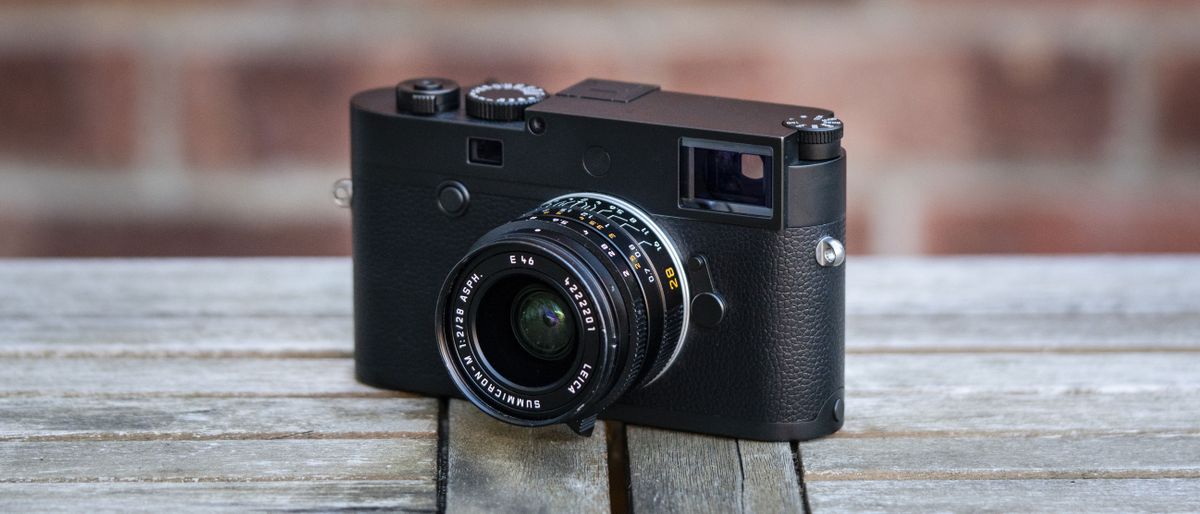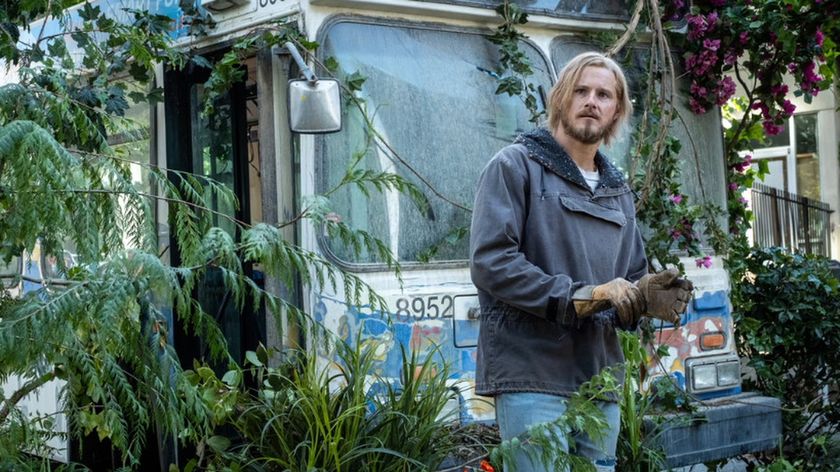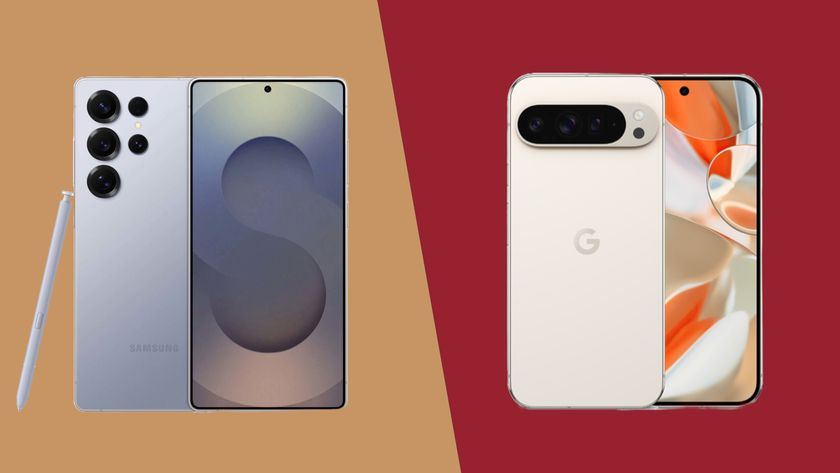TechRadar Verdict
Leica cameras are often considered excessively expensive, but they are premium cameras unlike any other. As a rangefinder that only shoots black-and-white photos, the Leica M10 Monochrom is about as niche as photography gets. Image quality is incredible, though, and high ISO handling is mind-blowing.
Pros
- +
Extremely well-designed
- +
Outstanding noise response
- +
Near silent shutter
Cons
- -
Expensive
- -
Only shoots in black and white
- -
Manual focus only
Why you can trust TechRadar
Leica cameras are known for being uncompromisingly unique, bucking digital camera trends and marching to the beat of their own drum. The Leica M10 Monochrom certainly lives up to this reputation, and will undoubtedly be the subject of passionate debate between photographers.
A camera that costs $8,295 / £7,250 / AU$13,500, only shoots in black-and-white, and doesn't shoot video is always going to divide opinion.
The Leica M10 Monochrom is the successor to the Leica M Monochrom (Typ 246) that was launched back in 2015. The new M10 version sees a host of upgrades that make the camera a much more enticing proposition than its predecessor.
Of course, the price will prove the greatest hurdle for most photographers, but the real question is – does a camera that only shoots black-and-white and uses manual focus lenses have a place in the modern photographic world?
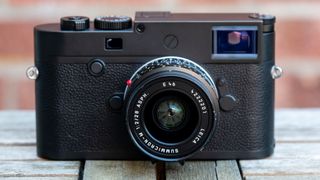
Design and features
- Robust and minimalist design
- 40MP black and white sensor
- ISO range of 160–100,000
The M10 Monchrom is, at its most fundamental level, a monochrome-only version of the Leica M10-Pm, but with a higher resolution.
Sensor: 40MP B/W CMOS without colour and low-pass filter
Lens mount: Leica M bayonet
Screen: 3-inch 1036K-dot touchscreen
Burst shooting: 4.5fps
ISO sensitivity: 160 – 100,000
Video: No
Connectivity: Wi-Fi
Weight: 660g
The camera features a newly developed 40MP full-frame sensor with no color filter array or low pass filter, which can reduce the amount of light reaching the sensor and cause deflections.
This means it can gather more light, produce sharper images and finer detail at higher ISO settings. This is a significant upgrade on the 24MP M Monochrom (Typ 246) and makes the M10 Monochrom the highest resolution M series camera to date.
The dynamic range of the sensor is just under 15 stops, and the ISO range extends from 160-100,000 natively, meaning that you can confidently shoot in even the lowest light conditions handheld with usable results.
Shutter speeds range from 8 seconds to 1/4000s, with Bulb mode providing exposures up to 16 minutes when using a traditional screw-in cable release. Flash sync speed is 1/180s and is signified by a flash symbol on the shutter dial.
As you’d expect from a German designed and engineered camera, the M10 Monochrom is a beautiful object in its own right. Blink, and you may even miss the fact it’s a Leica thanks to the omission of the iconic red Leica dot on the front of the camera top plate.
This unassumingly simple design oozes self-confidence in a photographic world that’s all too often all about the brand that’s hanging around a photographer’s neck, rather than the images they take.
Of course, to the trained eye, there’s no mistaking it’s a Leica, but to the untrained eye, it’s simply a small black camera. It’s safe to say that the M10 Monochrom is more discreet than a camera costing a fraction of its $8,295 / £7,250 / AU$13,500 price tag.
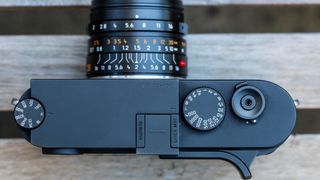
The minimalist matte black design with just the shutter button, on/off switch, shutter dial and ISO dial on the top of the camera provide direct access to only the essential settings you need while shooting.
Aperture control is provided using the manual aperture ring on lenses, and in terms of semi-automatic shooting modes, aperture priority is the only option alongside manual.
The back of the camera is equally minimalist with just a button for Live View, a Play button to review images, a menu button and a D-pad. There’s also a thumb dial that can be set to Live View zoom or exposure compensation for when shooting in aperture priority, with the latter being the most useful if you tend to shoot mostly in this mode.
The 3-inch 1.036 million-dot touchscreen is crisp and clear making using Live View and reviewing images comfortable. The screen is fixed, however, which may not appeal to everyone, but the trade-off is that to have an articulated screen may require the camera body to be thicker and bulkier than it is in its current form.
The touchscreen aspect isn’t the most responsive and although there’s much better out there, it’s still usable on the very few occasions you might find yourself using it.
If there was ever a camera that you could honestly say is built like a tank, then the M10 Monochrom, and any M series cameras in general, would fit into that category.
Overall build quality is outstanding – these cameras are designed for years of heavy use – the top and base plates are milled from solid blocks of brass with a black, chrome-plated finish.
The rest of the camera body is made of all-metal die-cast magnesium with a faux leather cover. This makes the Monchrom incredibly robust, but also means that this discreet and compact camera weighs in at 660g (body only). However, when carrying the camera in the hand or around the neck by the strap, it’s comfortable for hours of shooting.













Performance
- Intuitive menu and controls
- Traditional rangefinder focusing
- Near silent shutter
In the days of film, rangefinders were a smaller, lighter and more discreet option than SLRs. Plus, they often used fast optics that were ideal for shooting handheld in low light conditions.
The Leica M10 Monchrom certainly follows in this tradition and the minimalist design we’ve already discussed is perfect in shooting situations where discretion is paramount. The near-silent shutter adds another dimension here in that it allows you to shoot in situations where a shutter click may disturb an event, or you simply don’t want people to know that you’re taking photographs of them.
Since the Monochrom is a traditional rangefinder, albeit with a sensor rather than film, focusing is performed manually using either the optical viewfinder or Live View.
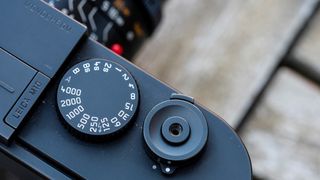
You may read that the focusing system employed by Leica M series cameras is outdated and difficult, but this couldn’t be further from the truth.
The use of traditional lenses also brings several advantages. For example, if Leica developed autofocus lenses for its rangefinders, the lenses would need to be huge. And that would negate everything the camera is designed for.
Another advantage is that if you’re invested in Leica lenses, you’ll be able to use those that are decades old with the latest cameras, because the Leica M mount has remained the same since the early 1950s.
Focusing uses the traditional rangefinder method that features a window in the centre of the viewfinder that brings together two ghost images. When the images are lined up perfectly as a single image in the window, the shot is in focus – it’s a little like the split-field focusing screen you often got with 35mm SLRs.
Admittedly, rangefinder focusing takes a little getting used to if you’re only used to autofocus, but it’s far from difficult.
One of the advantages of manual focus with a traditional lens featuring a focus and depth-of-field scale is that you can simply set the camera to f/8 and use hyperfocal distance, so you can shoot quickly without the need to focus every shot.
If you've ever heard the phrase 'f/8 and be there', this is what it's all about. This aperture, alongside even near correct focus, will ensure everything is acceptably sharp, so you simply need to be in the right place at the right time to capture the action as it unfolds.
When focusing with Live view you get a 100% view on the LCD screen and focus peaking allows you to see what’s in focus – it's highly effective and can be relied upon when shooting using the screen.
Another point worth mentioning is that the M10 Monochrom is capable of shooting at up to 4.5fps with a 10-frame buffer. It's far from a Canon EOS 1DX MkIII, but this is realistically more than fast enough for the types of photography Leica cameras are typically used for.














Image quality
- Outstanding ISO response
- 15-stop dynamic range
- High levels of sharpness
Based on the image quality of the M Monochrom (Typ 246), expectations of the Leica M10 Monochrom were naturally high – and it's safe to say the camera exceeds them.
With ISO handling so eye-wateringly good, you can confidently shoot at up to ISO 100,000 and still get great results. The absence of chroma noise means there are no colored flecks in high ISO images. Luminance noise looks like grain and is aesthetically pleasing in black-and-white images.
Even at ISO 100,000 grain is surprisingly smooth. If you were splitting hairs you might say grain starts to become noticeable at ISO 25,000, but it's still clean with images exhibiting fine detail. This means you can set the camera to Auto ISO with any setting dialed in as the maximum and be confident that image quality will be excellent. ISO results are so remarkable thanks to the monochrome sensor.

ISO test








One point worth mentioning is that when shooting in Raw, Leica cameras use DNGs and these come with several settings already dialed in. Luminance noise reduction is applied at varying amounts depending on the ISO setting used. Lens Profile corrections are also turned on, except chromatic aberration which isn't an issue with a black-and-white camera, and a custom Tone Curve is applied to add contrast.
This makes it possible to output a Raw file without any adjustments, although you will naturally get better results by fully processing Raw files before output. With just under 15 stops of dynamic range, you can pull vast amounts of detail from high contrast images.
Combine all of this with the excellent Leica optics and images, on the whole, can be sublime. Although with the average M mount lens costing big bucks, this makes joining the system prohibitive for many photographers before you even factor in the cost of the camera body.

Verdict
Leica cameras are often considered excessively expensive, but let's not forget the fact that they're premium cameras unlike any other. Build quality is second-to-none, and the quality of lenses, albeit often more expensive than other manufacturers' camera bodies, is equally impressive.
What makes the Leica M10 Monochrom even harder to justify is the fact that it only shoots in black-and-white, which unquestionably makes it a niche camera.
You can, of course, take a Raw file from any digital camera and convert it to black-and-white, but it's safe to say that no 'standard' Raw file will produce the image quality that's possible with the M10 Monochrom.
There's something special and distinctly unique about a sensor that only shoots in black-and-white. This is because of the amount of light that reaches the sensor – it only records luminosity – and the absence of a low pass filter, which increases overall image sharpness.
The minimalist design of the camera makes it a beautiful object in its own right and the anonymous styling makes the camera almost unnoticeable.
Leica cameras are mostly, but not exclusively, used for reportage and street photography, so the near-silent shutter is invaluable for shooting images in places where the click of the shutter may disturb people or you simply don't want to alert people to the fact your taking pictures of them.
Like most Leica cameras, the M10 Monochrom is quirky, expensive and niche, but the shooting experience it provides is nothing short of exquisite. Shooting with the camera is about as close to film photography as you can get with a digital camera, and it’s a lot of fun to use.
Admittedly, using a rangefinder isn't for everyone, but the system does provide several advantages over more modern autofocus cameras and lenses, not least the tiny size of Leica's outstanding optics.
The competition
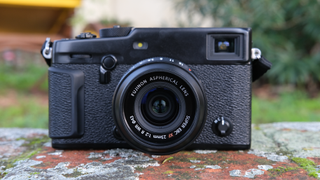
Finding a competitor for Leica cameras is never easy because the cameras are uncompromisingly unique, but there are two that spring to mind.
The Leica M10 Monochrom is a black-and-white version of the Leica M10-P, which shoots standard Raw files with its 24MP color sensor and is slightly less expensive.
If this is still too far off budget, the next logical option has to be the Fujifilm X-Pro 3, which is significantly cheaper and sports a 26MP APS-C sensor.
The latter isn't a 'true' rangefinder in the Leica sense, but it's as close as you can get on a budget.
James Abbott is a professional photographer and freelance photography journalist. He contributes articles about photography, cameras and drones to a wide range of magazines and websites where he applies a wealth of experience to testing the latest photographic tech. James is also the author of ‘The Digital Darkroom: The Definitive Guide to Photo Editing’.
Most Popular





